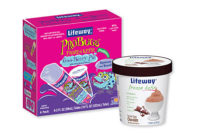For food microbiology, the change of the day is next-generation sequencing
Next-generation sequencing has made a huge impact on microbial culture by enabling better forensic tools to identify bacterial strains

Change is increasingly beginning to seem like the only constant. There’s the ever-rotating millennial tastes replacing those of the steadfast boomers. There’s my always updating Apple’s iOS, forcing me to upgrade from an iPhone 7 to an iPhone X. Star Trek, which predicted so many of these new disruptive technologies, also predicted the next-generational nomenclature when it replaced Captain Kirk with Piccard.
In the world of food microbiology, the change of the day is next-generation sequencing (NGS). What does it all mean, and how will it impact our dairy culture future?
NGS is an ever-growing set of technologies that allows us to do rapid, in-parallel genetic processing and analysis. Imagine DNA strands as trains. In “traditional” sequencing, we would take a long train and make copies while randomly inserting a “caboose” into each copy. We’d send each copy down the “tunnel,” count the number of “cars” until we hit the caboose, and record the car type (A, T, C, G) attached to the caboose. Using the number of cars, car type and frequency of the combinations, we could determine the train’s sequence.
It was accurate, but time-consuming. Genomes are very, very long trains. With NGS, we realized that if we use a lot of tunnels and run only short trains (fewer than 100 cars), we can identify the sequences of those short trains very rapidly. Computers can quickly compare those sequence and the overlaps — and how they make up a longer train.
NGS has made a huge impact on microbial culture by enabling better forensic tools to identify bacterial strains. Identifying bacteria by genetic “fingerprints” is common, but their “fingerprints” are actually more common than our own. NGS lets us rapidly look at the whole genetic “body” of a bacterial isolate so public health officials can confidently tell that the strain that made you and your brother sick really matches one found in lettuce, not ice cream.
Another benefit of the whole genetic “body” view is that we’re finding that strains that look different actually carry the same unfortunate “accessory” genes. For example, through NGS, we know that not only are Bacillus cereus and Bacillus thuringiensis closely related, but some strains of the latter can carry the toxin genes of the former, which means we need to better know our strains and where we use them so no one gets sick.
Who’s at the party?
Our dairy fermentations are like an 80s Greek-life block party attended by houses of starter/nonstarter bacteria, yeast and molds. The ability of NGS to rapidly sequence short reads such as “fingerprints” means we can get a fuzzy snapshot of the party. We may not be able to make out individuals, but we can tell which “houses” are there.
With that information, we can get an idea of which houses make for better cheese parties, and which ones spoil it when they show up. As we characterize more complex dairy communities, we may find some surprising microbes are responsible for great cheese parties.
Next-generation cultures
All the data generated through NGS is also letting us find the next generations of dairy cultures. By comparing the genomes of bacteria with different flavor profiles in cheese, we can tease out which genes are important for those flavors. In the lab, we can also randomly create mutations that either improve or reduce a flavor, and use NGS to figure out which genes are responsible.
We can take that knowledge and use NGS to rapidly screen bacterial isolates from nature for the flavor potentials we want. In fact, it’s already being done, and those next-generation cultures might be in your next fermented dairy bite!
Looking for a reprint of this article?
From high-res PDFs to custom plaques, order your copy today!






